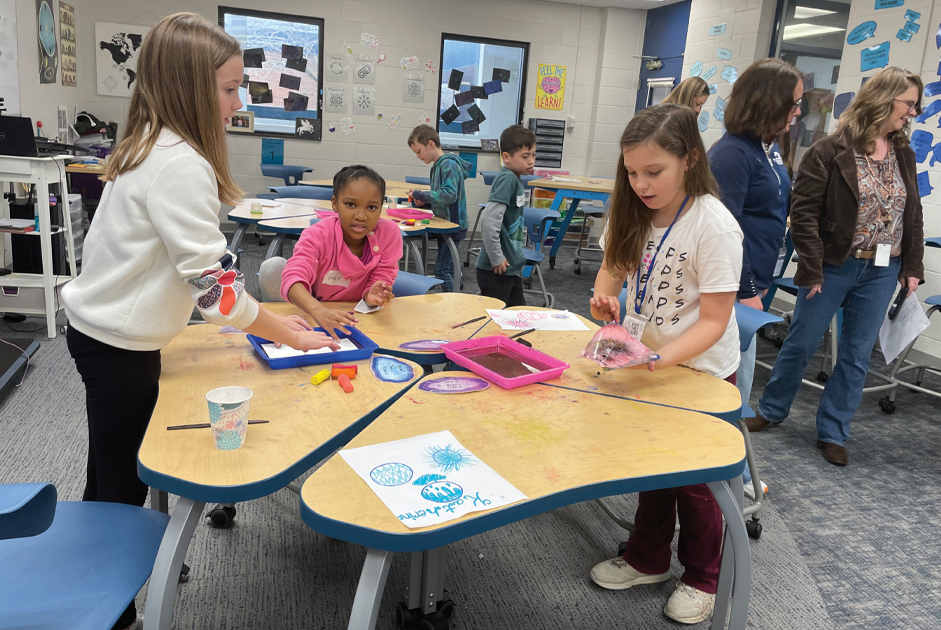By Priscilla St. John
Imagine a modern classroom. Rather than having a “sage on a stage” – where teachers stand at the front of the room and students face them – imagine an adaptable space that allows the teacher’s desk, technology, and all student seating to move in order to adapt to what the class is doing on any given day. Imagine natural light in every room, with adjustable artificial light so that the teacher can adjust the lighting to fit the task at hand. Imagine a space that allows students to make choices about how they sit and experience the class. That is a modern classroom at Forsyth Country Day.
Creating modern classrooms is all about helping students to develop cognitive, emotional, and social skills. “As we look at the modern classroom, we want to make sure it’s structured in such a way that it attends to those three areas,” she said. “It needs to limit distractions, provide clear visual clues about what type of learning happens in that space, and help students identify and manage their emotions.”
If that seems like a tall order for a room full of desks and chairs, know it’s about a lot more than that. “The learning environment is a third teacher,” Dr. Klosterman said. “What you post on the wall, how you use the walls, the color, texture, and design…these all play a role,” she said. “The teacher’s voice can be welcoming but authoritative or loud and harsh. The room can be cluttered or calming and welcoming. The furniture in the classroom must to moveable and flexible to allow for student choice and voice in where and how they sit and congregate and learn.”
The good news is that some of these improvements are free or very inexpensive. “A no-cost way of doing this is reducing clutter,” Dr. Klosterman said. “It’s more conducive to learning and the wellbeing of students.” What’s on the walls shouldn’t overwhelm, and it should relate to what is being learned at the time.
“Classroom updates aren’t just about the furniture,” said school architect Lauren Frye. “They will also be about wellness. Each element in our classrooms will be intentionally chosen to support student belonging and wellbeing. These are things that can’t be shown in images, but that are critical to creating classrooms of the future.”
What Our Teachers Say About Modern Classrooms
“Modern classrooms positively impact students’ brain development. We want to provide our littlest learners with classrooms that are accessible, but most importantly, ensure that they feel safe and secure in their space.” – Chelsea Eller, preschool director
“We are redesigning spaces while considering their uses and users, and keeping in mind that there is no separation of emotions, thinking, and learning.” – Jenni Wright, LS teacher
“The modern classroom allows teaching to be responsive to the needs and experiences of all students. Flexibility in teaching (and seating) helps instill collaboration, sharing, and confidence in students as they learn and grow together.” – Jen Scott, MS teacher
“Because teaching and learning involves movement – teams, partners, discussion circles – classrooms need to be movable! They also need to be welcoming to students – the lights, layout, and organization matter a lot for the atmosphere of learning. Students spend more time in classrooms than many other places, and they should feel excited and happy to be in those spaces.” – Grace Mason, US teacher
If your child would thrive in an interactive and engaging learning environment, we encourage you to visit our campus and see our students and classrooms for yourself. Schedule your tour by visiting FCDS.org/admission or by calling 336-946-1692.


















